The Most Poisonous UK Fungi Part 1.
11th May 2022The mushrooms included in this article are all identified as poisonous! Great caution should be taken when identifying mushrooms and you should never consume anything without being 100% certain it is edible. Please read the article carefully about each mushroom listed and familiarise yourself with the poisonous species. Further information about these poisons can be found in our mushroom guide.
The list of mushroom species which might cause potentially fatal intoxication is different country by country. Not only because the list of native species might be different, but because the frequency of each species, and their edibility/toxicity ranking might be different too.
I moved to this beautiful country not too long ago from Hungary, so I don’t want to imply that the list below is without any possible faults. I edited it with as much prudence as possible but it may be subject to further updates.
In my home country, most of the lectures and public speeches about fungi contain a description of the Deathcap (Amanita phalloides). Not only because it is responsible for almost all of the fatal mushroom poisoning cases in Hungary (and all over Europe), but because still many people believe that fly agaric (Amanita muscaria) is the actual Deathcap, so they don’t pay attention to the real one. The whole concept behind setting up a nationwide network of qualified mushroom experts (called: gomba-szakellenőr, or Mushroom Inspector in English) and at the same time, running basic mycology courses/trainings from the late fifties was to introduce the Deathcap to the public through a free of charge basket checking service. In an attempt to reduce the number of fatal poisoning cases as close to zero as possible.
In the UK there are very few fatal mushroom poisonings, though this is mostly because there are lot less people picking wild mushrooms here. The popularity of mushroom foraging however is growing and so we’ve put this article together to help educate foragers and make you aware of the mushrooms to avoid. Don’t be afraid, be informed when it comes to foraging! We hope that the information in this article will help you keep safe on your mushroom foraging journey. Remember though, this is far from a comprehensive list of toxic mushrooms.
On this website we have descriptions of many of these potentially lethal mushrooms, you can click either their common English names or their scientific names, and the link will drive you to their well photographed descriptions. However, there is no article about mushroom poisoning without at least a short description of the Deathcap, so here it is:
1.Deathcap (Amanita phalloides)
Cap: 5–15 cm across, ovoid, then convex to flat. Very variable in colour, but mainly olive-greenish, olive-yellowish, however, there is an almost white variety too! Skin smooth, with faint radiating fibres. Mostly without remnants of volva. Slightly shiny when moist.
Gills: Crowded, free, broad, white, the edge of the gills is smooth.
Stem: 7–20 cm tall, 1–2,5 cm wide, cylindrical. White, flushed with the cap colour and often faintly banded, sometimes becoming hollow. Ring weak, descending (pendulous). Bulbous base ended in large, white, bag-like volva.
Flesh: Soft, juicy, white. Taste pleasant, smells like freshly grated potato when young, becoming unpleasant, like rotting potato with age.
Spore print: White.
Habitat: From June to November, in mixed deciduous woodlands, mostly under oaks.
Culinary value: Deadly poisonous!
Possible confusion: Destroying Angel (Amanita virosa) is pure white, the same as Amanita verna, which is also called Destroying Angel in some countries but it is not native to the UK. False Deathcap (Amanita citrina) and some of the Dapperlings (Leucoagaricus spp.).
Toxins: Hepatotoxic amatoxins (e.g., alpha-amatoxin, its estimated LD50 (for adults) is 0.2–0.5 mg/bodyweight kg, in case of children the LD50 is much lower, somewhat 0.05 mg/bodyweight kg) and phallotoxins.
In brief: If a mushroom has white gills, white stem, white ring, and its bulbous stem base that ends up in an obvious, white volval sack, then just leave it where it is because it very well might be a Deathcap or one of its equally poisonous relatives!
Probably the most well-known suspected(!) Deathcap poisoning case is connected to the death of Claudius (Tiberius Claudius Caesar Augustus Germanicus) in 54 AD. As per one of the theories, Agrippina (Julia Agrippina, or Agrippina, the “Younger”) is somehow responsible for the death of Claudius. Claudius was well-known for his love of Caesar’s Amanita (Amanita caesarea). Traditionally it was consumed in the unripened egg form so it was easy to hide at least a Deathcap egg amongst the Caesar’s Amanita eggs. If it is true or not, we will never know for sure, but e.g. Josephus Flavius, the famous Roman historian, considers the story as rumour only.
2.Destroying Angel (Amanita virosa)
Cap: 5–10 cm across, conical, bell-shaped (campanulate) then flat. Pure white. Skin smooth, without any remnants of volva. Slightly silky, shiny, lightly viscid when wet. Cap margin remains inrolled for some time, then turns acute.
Gills: Crowded, free, broad, white, the edge of the gills is covered with cotton-like scales (floccose).
Stem: 7–12 cm tall, 0.8–1,5 cm wide, cylindrical, mostly straight. White, longitudinally scurfy, faintly patterned. Ring is weak, fragile and descending (sometimes absent). Base enlarged, ended in a large, white, bag-like volva.
Flesh: Thin, soft, juicy and white. Taste not distinctive, smells like radish (raphanoid) when young, becoming noticeably sweet with age. Turns bright yellow if KOH applied.
Spore print: White.
Habitat: From August to November, often on the edge of deciduous or mixed woodlands, mostly under beech. Prefers acidic soil, including acidic sand, in some countries it is more abundant on conifer plantations on sandy soil than the Deathcap.
Culinary value: Potentially deadly poisonous!
Possible confusions: White form of Deathcap (Amanita phalloides) and Amanita verna, which is also called Destroying Angel in some countries, but it is not native to the UK. False Deathcap (Amanita citrina) and some of the Dapperlings (Leucoagaricus spp.).
Toxins: Hepatotoxic amatoxins (e.g., alpha-amatoxin, its estimated LD50 (for adults) is 0.2–0.5 mg/bodyweight kg, in case of children the LD50 is much lower, somewhat 0.05 mg/bodyweight kg) and phallotoxins.
3.Splendid webcap (Calonarius splendens, syn.: Cortinarius splendens)
Cap: 4–6 cm across, convex then flattened. Bright golden yellow to slightly Sulphur yellow, with red-brown spotting at the centre. Skin is viscid, sticky, not hygrophanous.
Gills: Wide, crowded and attached to the stem (adnate)
Stem: 3–6 cm tall, 1–1,5 cm wide, dry and cylindrical with a marginal basal bulb. Same yellow as the cap.
Flesh: Rather similar yellow as the cap. It doesn’t have any distinct smell; its taste is mild. A droplet of KOH turns somewhat red on the flesh.
Spore print: Rusty brown.
Habitat: A late Autumn species, growing on calcareous soil, mycorrhizal with beech (Fagus). Quite rare in the UK.
Culinary value: Potentially deadly poisonous!
Possible confusions: Cortinarius meinhardii is not native to the UK, but it looks almost identical. The macroscopic differences are: it has olive-brown to blackish patches at cap centre, also it has an odd, pungent smell. It grows in mountainous conifer woods in late Autumn.
The two species can be separated with a droplet of KOH solution. The colourless reagent will turn olive-brown on the cap of Splendid Webcap, while it will turn olive-green on the cap of C. meinhardii.
Toxins: Unknown (it doesn’t contain orellanine, but it causes severe kidney damage, which makes it a life-threatening species.
4. Fool’s Webcap (Cortinarius orellanus)
Image – Flickr / fotoculus
Cap: 3–9 cm across, convex then bell-shaped (campanulate) with a wide, distinct umbo at the centre. Margin incurved, becoming wavy with age, sometimes cracked. Dark orange-brown to reddish, rusty brown, darkening with age. Skin finely velvety (tomentose), covered with fine scales (squamulose).
Gills: Wide, distant and attached to the stem (adnate). Orange-brown to rusty brown.
Stem: 5–10 cm tall, 0,7–1,5 cm wide, cylindrical, tapering towards the vase. Rusty yellowish, surface smooth or faintly fibrous, without velum remnants.
Flesh: Thin, pale yellowish to brownish; smells slightly like radish (raphanoid), tastes mild.
Spore print: Rusty brown.
Habitat: From June to October, in hardwood forests, on acidic soil. Widespread, but rare in the UK.
Culinary value: Potentially deadly poisonous!
Possible confusion: Other Webcap species, especially from the same section (Orellani), e.g. Deadly Webcap (Cortinarius rubellus/orellanoides), Sunset Webcap (Cortinarius limonius) and Tawny Webcap (Cortinarius callisteus), Cortinarius henricii etc.
Toxins: Orellanine, a strong nephrotoxin which has an extremely long latency (2–17 days after consumption). It is accumulating. Its LD50 (mice) is 12–20 mg/bodyweight kg, seems to be considerably lower in case of humans. Orellanine can be identified from urine sample, due to it is fluorescing under UV light.
5. Funeral Bell (Galerina marginata)
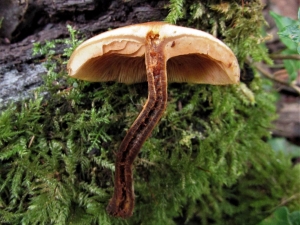
Cap: 1–7 cm across,
Hemispherical, then bell-shaped, finally slightly flattened; yellow- to tan-brown when moist, turns pale when drying, margin dries slower; surface is smooth (sometimes covered in whitish remnant of veil), edge striate.
Gills: Crowded, adnate or slightly decurrent. Ochre-yellow when young, brownish with age.
Stem: 2–8 cm long, 0,3–1 cm in diameter, cylindrical, hollowed. Pruinose at apex, with membranous, ephemeral ring. Smooth at apex, floccose or fibrous below ring.
Flesh: Thin, soft and fragile; ochraceous to brownish, smell and taste mealy.
Spore print: Ochraceous.
Habitat: From September to November, mostly alone or in small clusters on decaying pines, rarely on deciduous trees.
Culinary value: Deadly poisonous!
Possible confusions: Based on toxicology case reports, there are three species which are often confused with Funeral Bell: Sheathed Woodtuft (Kuehneromyces mutabilis), Velvet Shank (Flammulina velutipes) and Honey Fungus (Armillaria mellea). All are growing in clusters, not one by one and both prefer hardwood. Unfortunately, the Funeral Bell might appear on hardwood too, but it is not very common.
Velvet Shank doesn’t have a ring or a ring zone, its stem darkening toward the stem base and it is rather velvety. Not to mention that it is really a winter species, however at the beginning of its fruiting period there is a possibility if it fruits in the same time as Funeral Bell.
Sheathed Woodtuft has an ephemeral ring, but the stem under the ring is darkening towards the stem base and scaly, while the stem of Funeral Bell is covered with silky-white to silver fibres, not scales.
Honey Fungus has a much more persistent ring, and the presence of golden yellow colour (which is the reason behind its scientific name) all over the fruit bodies (cap, stem, ring) makes it rather hard to mistake it with Funeral Bell, but it can happen.
Toxins: Amatoxins (α-, and β-amanitin), causing similar symptoms as Deathcap poisoning.
For giving an example of its strength, about 10 fruiting bodies contains enough toxin to cause fatal intoxication for a child with 20kg bodyweight.
6. Conocybe rugosa, syn.: Pholiotina rugosa
Cap: 1–2.5 cm across, conical then bell-shaped (campanulate) or broadly convex with a faint marginal striation. Skin is smooth or slightly wrinkled, dry, tawny-brown to caramel coloured with a paler margin. Hygrophanous, fading to buff if the weather is dry enough for long time.
Gills: Thin, moderately crowded and barely attached to the stem (adnexed). Pale buff when young, but because of the colour of the spores, it turns cinnamon to rusty coloured with age.
Stem: 1.5–5 cm tall, 0,2–0,4 cm wide, slender, becoming hollowed and fragile with age. Somewhat brownish, longitudinally striated, covered with fine granules above the white ring. The upper surface of the ring is striated, and often covered with cinnamon coloured spore deposit.
Flesh: Thin.
Spore print: Cinnamon to rust-brown.
Habitat: From July to October, growing on leaf litter, peaty garden compost, sawdust, woodchips etc. Uncommon but widespread (likely under recorded).
Culinary value: Potentially deadly poisonous!
Possible confusions: Common Conecap (Conocybe tenera) has a more sharply conical cap, it doesn’t have a ring, it grows on different habitat (on lawns and other grassy areas, rarely on woodchip mulch) and it is growing earlier, from May to September.
Toxins: Amatoxins, causing similar symptoms as Deathcap poisoning.
7. Deadly Fibrecap (Inosperma erubescens, syn: Inocybe erubescens)
Cap: 3–10 cm across; conical or bell-shaped when young, later flattened, but always retaining a slight umbo, margin wavy when old, splitting radially. Whitish first, then creamy, later brick-red; surface covered with silky fibres.
Gills: Crowded, connected to the stem; whitish then greyish, finally reddish to olive-brown, turning reddish when injured, edge is whitish.
Stem: 4–8 cm long, 0,5–2 cm in diameter; cylindrical, often stout, not bulbous; fibrous, whitish at first, bruising brick-red.
Flesh: Soft and fragile in cap, fibrous in the stem; whitish, weakly reddening; smells sweet and fruity when young, unpleasant with age, taste is not distinctive.
Spore print: Tobacco brown.
Habitat: From May to September (in the UK), in deciduous woodlands.
Culinary value: Potentially deadly poisonous!
Possible confusions: Some authors say it can be confused with St. George’s Mushroom (Calocybe gambosa). It is true that their fruiting season might be overlapping, but St. George’s mushroom doesn’t stain red, there are no fibrous scales on its cap, it has a distinctive mealy smell and it doesn’t really require chalk in the soil.
There are a few blushing/reddening Fibrecaps too, e.g. Inocybe godeyi, but it is smaller (cap is 1.5–5 cm), it has bulbous stem base, and it prefers the same habitat as its infamous distant cousin, the Deadly Fibrecap.
Toxins: Muscarine, in much higher dose as it presents in Fly Agaric (Amanita muscaria). According to Patočka et al. (2021), the LD50 of Muscarine for humans is about 0.735 mg/bodyweight kg. Please note that most of the Muscarine containing species will be mentioned in the next article, but this species already caused death in the UK (1937), this is why we decided to mention amongst the potential fatal species.
Dapperlings
These Mushrooms are all very similar in appearance. It is extremely difficult to ID them in species level without microscopy. None of them are edible, some of them are potentially lethal, containing the same toxins as Deathcap, so it is the best if you just leave them where you found them.
Toxins: amatoxins, causing similar symptoms as Deathcap poisoning.
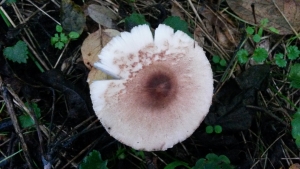
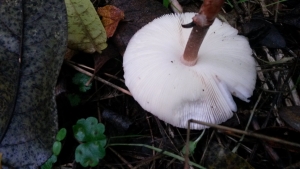
Pictured: The closest to a Lepiota brunneoincarnata or Lepiota subincarnata without microscopy.
Small size Dapperlings (Lepiota spp.)
Girdled Dapperling (Lepiota boudieri)
Deadly Dapperling (Lepiota brunneoincarnata)
Chestnut Dapperling (Lepiota castanea)
Dark Dapperling (Lepiota fuscovinacea)
(Lepiota pseudolilacea)
Fatal Dapperling (Lepiota subincarnata)
IMPORTANT!
IMPORTANT: In case of suspected mushroom poisoning, call NHS (111) or your local (national) Poison Control. If you have a spare specimen of the consumed mushroom(s), take it with you. It might be useful if you have a few photos about the consumed mushrooms in their natural habitat, photographed from different angles.
There is a large group of volunteers (botanists and mycologists) on-line who support the local poison controls from all over the world with plant and mushroom identification. You can join their Facebook group via the following link and you can take the received ID to your ER doctor.
Potentially deadly poisonous species in the UK
Deathcap (Amanita phalloides) +
Destroying Angel (Amanita virosa) +
Splendid Webcap (Calonarius/Cortinarius splendens)
Fool’s Webcap (Cortinarius orellanus)
Deadly Webcap (Cortinarius rubellus) +
Funeral Bell (Galerina marginata) +
(Conocybe/Pholiotina rugosa)
Deadly Fibrecap (Inosperma erubescens) +
Girdled Dapperling (Lepiota boudieri)
Deadly Dapperling (Lepiota brunneoincarnata)
Chestnut Dapperling (Lepiota castanea)
Dark Dapperling (Lepiota fuscovinacea)
(Lepiota pseudolilacea)
Fatal Dapperling (Lepiota subincarnata)
In the next article of this series, there will be more severely to mildly toxic species, including possibly the most common toxic species in the UK, which is Brown Rollrim (Paxillus involutus).
NEVER EAT ANY WILD MUSHROOM OR PLANT UNLESS YOU ARE 100%SURE OF WHAT IT IS AND THAT IT IS EDIBLE. 99% SURE IS NOT ENOUGH!
If you want to learn more about foraging why not come on one of our Foraging Courses

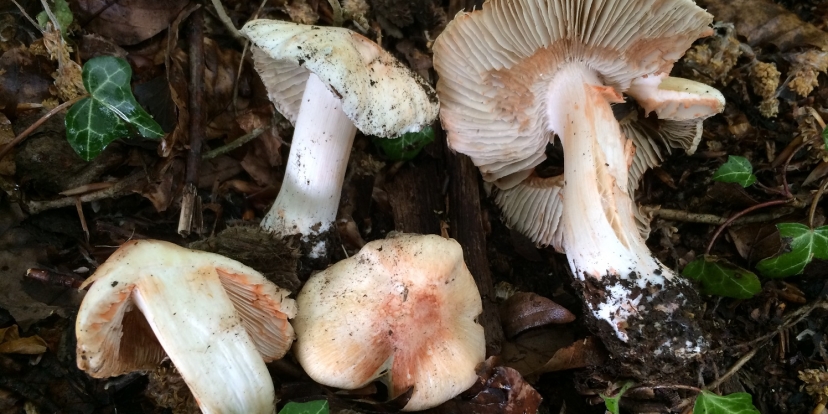
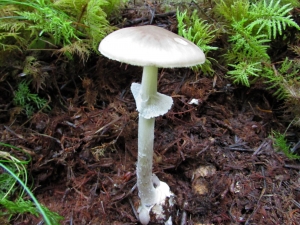
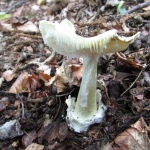
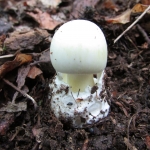
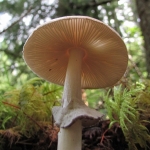
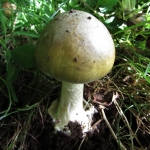
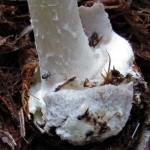
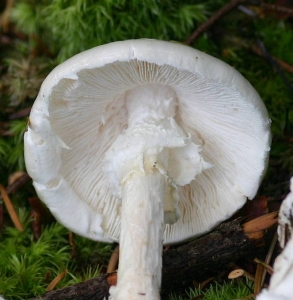
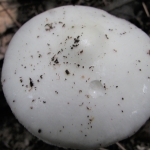
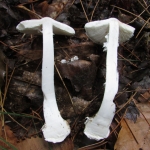
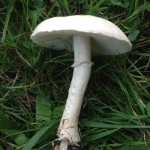
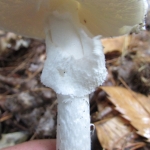
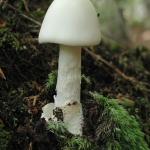
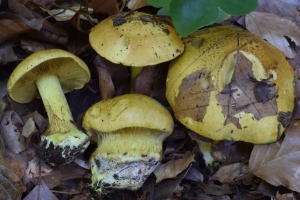
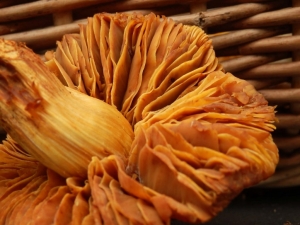
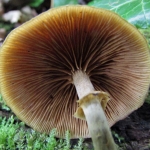
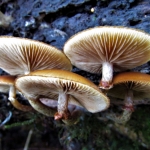
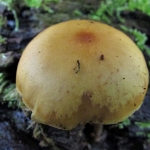
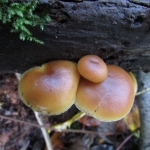
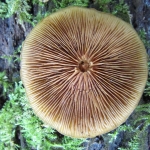
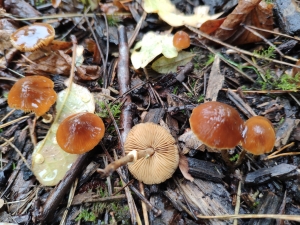
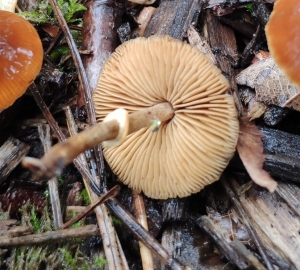
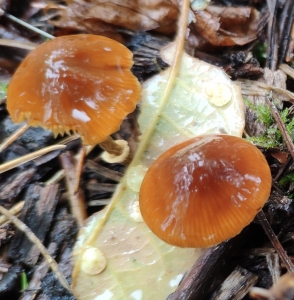
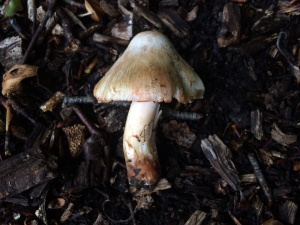
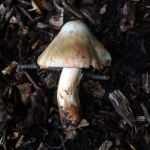
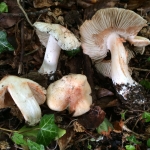
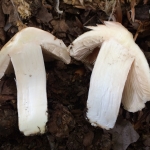
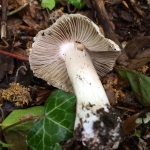
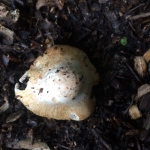



16 comments for The Most Poisonous UK Fungi Part 1.
Good work! Given the growing number of wild-food enthusiasts, these warnings are always welcome!
Thank you! This article will be followed by a few more. Our goal is to introduce more and more toxic species to create awareness.
Wonderful article.
So easy to read with all the relevant details.
More brilliant work by Attila Fődi
Looking forward to the next one.
A most helpful article.
It’s great to have all this info so easily accessible. Thanks for an informative article Attila, l look forward to the next ones!
Easy to follow, excellent descriptions I found this very helpful. Looking forward to more interesting articles. Thank you
Thank you! Depends on the interest, there might be 2-3 more articles like this in the future.
Very interesting thank-you. I hope i get to id some of these.
Thanks for this, reminds me to got back & continue editing your excellent ‘Trees and their fungal partners’ spreadsheet – trying to add likely fruiting times etc, challenging both my mushroom & excel skills..
Thank you, and you’re very welcome! We can help with the mushroom skills. If you feel you need some practice with us, just check the available foraging courses (and the forthcoming mushroom walks) on the following link: https://www.wildfooduk.com/foraging-trips/
Thank you for this article. I hope the information is widely disseminated amongst the new enthusiastic foraging community who are still acquiring much needed knowledge.
Really useful. thank you
Excellent article. Was surprised you didn’t mention more of the species from the Amanita group. For instance the Panther Cap (Amanita Pantherina) as this one is poisonous and may be deadly. It’s not one to be messed about with lightly and you really have to have your identification skills top notch as it has the potential to be confused with The Blusher (Amanita Rubesens, edible when cooked, poisonous when raw and the water used to cook must be thrown away, Amanita Excelsa said to be edible and lastly Amanita Aspera again said to be edible. As a sub group in the Amanita family they are all quite distinctive and very similar to one another.
Another poisonous one worth mentioning is the Boletus Satanoides, rare though very distinctive which comes from that iconic group containing The Cep or Penny Bun (Boletus Edulis). In 50+ years of mushroom hunting only seen them maybe top side half a dozen times. All the others mentioned although thought of as uncommon in most cases never failed to show on any forage.
Maybe these can be included in future articles as you develop this series.
Keep up the good work 🙂
Hi, Greg,
Thank you for your kind comment. This is only the first part of a series.
Traditionally we do not consider Amanita muscaria and Amanita pantherina as potential lethal species, so they will be mentioned in Part 2. I am sure you mean Satan’s Bolete (Rubroboletus satanas), not Boletus satanoides which is called Rubroboletus legaliae aka Bilious Bolete nowadays, and we consider it as conditionally edible (edible if cooked well).
In Central Europe we never discard the first cooking water of the blusher (Amanita rubescens), because there is no reason to do that. Ashen Amanita (Amanita excelsa) is perfectly safe to consume (if you ID it correctly). We don’t list Gilded Amanita (Amanita franchetii, syn.: A. aspera) as edible (there is no tradition of consume it in my home country).
Thank you Attila,
I am an artist, used to live in the UK for 10 years and I moved to Hungary 5 years ago… (as an Austrian) Are you aware of any foraging or mushroom courses you could recommend in Hungary…? Really like your article ..knowing what not to eat is already a great step towards greater confidence and awareness … 2022 is my first mushroom foraging year and it is amazing…(mostly in Örseg and near Köszeg) Also would like to make a Latin, English, German, Austrian (Permaculture Foraging Glossary Picture book)…
Hi Timea,
Thank you for your message. I have a few colleagues in mind who could help you with foraging course(s) in German and/or in English. Also, if you need any help with the book, just let me know (via our email address).